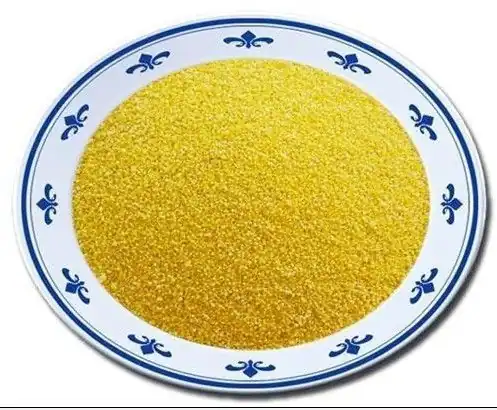Background and Overview
Nitroxynil (4-Hydroxy-3-Iodo-5-Nitrobenzonitrile) is a novel drug used to prevent and treat liver fluke infections in cattle and sheep. It was successfully developed in the 1980s by Rhône-Mérieux Institute in France. Liver fluke disease is a zoonotic parasitic disease, most prevalent in ruminants like cattle and sheep. The pathogens belong to the family Fasciolidae, genus Fasciola, including Fasciola hepatica (liver fluke), F. gigantica (giant liver fluke), and F. magna (large liver fluke). During the chronic phase of the disease, it leads to emaciation and growth retardation in animals, reduces the productivity of working cattle, decreases milk production in dairy cows, and lowers or degrades meat and wool yields, causing significant economic losses to the livestock industry. Nitroxynil (Nitroxinil, Dovenix, Trodax) is a synthetic drug developed by Rhône-Mérieux Institute in France that effectively eliminates liver flukes. Nitroxynil injection is more effective than oral administration. A single subcutaneous injection can achieve a 100% anthelmintic effect against adult liver flukes and giant liver flukes in cattle and sheep, but it is less effective against immature worms.

Preparation
Internationally, Nitroxynil is often synthesized using p-hydroxybenzonitrile as a starting material through nitration followed by iodination or iodination followed by nitration. The nitration reaction uses glacial acetic acid as a medium and fuming nitric acid as a nitrating agent, while the iodination reagent is potassium iodide and potassium iodate. This synthesis method has high production costs, high operational risk, and severe environmental pollution due to the use of fuming nitric acid as a nitrating agent. The use of potassium iodide and potassium iodate as iodination reagents results in low yield and long reaction times.
In China, due to the high price of p-hydroxybenzonitrile, p-hydroxybenzaldehyde is often used as a starting material. It is first reacted with hydroxylamine hydrochloride and sodium formate in formic acid to synthesize p-hydroxybenzonitrile. Then, it reacts with fuming nitric acid in glacial acetic acid to synthesize 3-nitro-4-hydroxybenzonitrile, which is then reacted with iodine and hydrogen peroxide in an acidic ethanol solution to synthesize Nitroxynil, with an overall yield of 74%. This synthesis method has high costs, difficult operation, and severe environmental pollution due to the use of iodine as the iodination reagent. Hydrogen peroxide is prone to decomposition, posing a high risk, and the overall yield is low.
CN200610155617.6 provides a simplified process, synthesizing Nitroxynil with a short synthesis route, easy operation, and high yield. It is carried out in the following steps:
(1) Reacting the total reaction substrate A, p-hydroxybenzaldehyde, hydroxylamine hydrochloride, and sodium formate in formic acid at 10~150℃ for 0.1~3 hours (monitored by chromatography), recovering formic acid, cooling the residual liquid and adjusting the pH to 2~7 to precipitate crystals, and separating to obtain p-hydroxybenzonitrile. The molar ratio of p-hydroxybenzaldehyde to hydroxylamine hydrochloride and sodium formate is 1:0.1~5:0.1~5, and the amount of formic acid used is 100~1500mL/mole of the total reaction substrate A;
(2) Reacting the total reaction substrate B, p-hydroxybenzonitrile, oxygen-containing iodate, alkali metal iodide, and alkali metal chloride in acetic acid at 10~150℃ for 0.1~6 hours, then adding sodium nitrite and reacting at 10~150℃ for 1~10 hours, followed by post-processing to obtain the target compound. The molar ratio of p-hydroxybenzonitrile, oxygen-containing iodate, alkali metal iodide, alkali metal chloride, and sodium nitrite is 1:0.1~5:0.1~5:0.1~5:0.1~5, and the amount of acetic acid used is 200~8000mL/mole of the total reaction substrate B.
The reaction formula is as follows:

Pharmacological Action
This product is a relatively new anthelmintic for liver flukes. Oral administration is less effective than injection. Subcutaneous injection and intramuscular injection have similar efficacy, but subcutaneous injection is more commonly used clinically. It has good effects on adult liver flukes and amphistomes in cattle and sheep, and also has good effects on liver flukes in pigs, Haemonchus contortus in cattle and sheep, and roundworms in dogs. The mechanism of action is to block the oxidative phosphorylation of the worm, reduce ATP concentration, and reduce the energy required for cell division, leading to the death of the worm. It is mainly used for liver fluke disease and gastrointestinal nematode disease in cattle, sheep, pigs, and dogs.
Usage Method
The usage and dosage of Nitroxynil vary for different animals. The following describes the usage methods for cattle, sheep, pigs, and dogs.
- Cattle: A single subcutaneous injection is 100% effective against adult liver flukes and giant liver flukes in cattle. However, it is less effective against immature worms and requires a doubled dose to achieve a certain effect. For pancreatic amphistomes in cattle, two administrations (one month apart) also produce good results.
- Sheep: The anthelmintic effect on sheep is similar to that on cattle, and subcutaneous injection is superior to oral administration. A single subcutaneous injection has an excellent anthelmintic effect on adult liver flukes, giant liver flukes, and amphistomes. Immature worms require a large dose. Subcutaneous or abomasal injection is effective against Haemonchus contortus, but injection into the rumen is ineffective.
- Pigs: A single subcutaneous injection can convert all fecal eggs of liver fluke-infected pigs to negative.
- Dogs: Subcutaneous injection or oral administration has an 80% elimination rate for roundworms in dogs.
Instructions for Use
Cattle and sheep show good tolerance to therapeutic doses of Nitroxynil. Oral administration has unstable anthelmintic effects, so subcutaneous injection is mostly used. However, the injection solution is irritating to tissues. Cattle and sheep generally have mild reactions, while dogs have severe local reactions, even causing swellings, so use with caution. Nitroxynil solution can stain sheep wool yellow, so avoid spillage during use. This product is excreted slowly and repeatedly. Redosing should be spaced at least 4 weeks apart. The United States stipulates that animals should be withdrawn from the drug for 30 days before milk and meat products are marketed.

